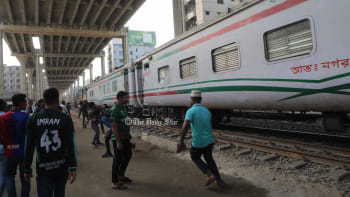A bold commitment

On Dece-mber 26, 2004, a magnitude 9.1 earthquake struck the ocean floor off the coast of Sumatra, Indonesia. The earthquake then triggered a tsunami that rumbled out across the Indian Ocean and onto the coastlines of surrounding countries. Almost 200,000 people were killed; at least five million were affected.
Owing to its sheer scale, the Indian Ocean tsunami looms large in the WHO South-East Asia Region's collective memory. It has also loomed large in how the region approaches all-hazard emergency risk management and response: to prevent and manage public health emergencies, we must manage risks, and to manage risks, we must identify and remedy vulnerabilities.
That approach has seen the region become a global leader in the field. The region's twelve benchmarks of emergency preparedness and response, for example, are a one-of-a-kind initiative. So too is the South-East Asia Regional Health Emergency Fund (SEARHEF), which now aims to strengthen preparedness, not just response.
Since 2014, when emergency risk management became one of the region's Flagship Priorities, member-states have made strong gains. All eleven now conduct annual assessments of core capacities as they relate to the International Health Regulations (IHR). Almost all have successfully completed Joint External Evaluations—a key means of identifying and remedying vulnerabilities. The Asia Tripartite, which is comprised of WHO, the Food and Agriculture Organization of the United Nations (FAO) and the Organization for Animal Health (OIE), has formalised operations. It is working with member-states regionwide to address vulnerabilities at the human-animal-ecosystems interface.
We have come a long way. And we have a long way to go. As outlined in several key instruments, from WHO's new General Programme of Work to the Global Health Security Agenda, identifying, mitigating and responding to threats requires ongoing vigilance and the scaling up of capacities to achieve full IHR compliance—the gold standard for securing health in the face of evolving threats.
On that score, the Delhi Declaration—which was just issued at the seventy-second session of the Regional Committee—and its accompanying five-year Strategic Plan will fill a crucial need. Not only will the Declaration and Plan ensure that the region's momentum is sustained, and that it is aligned with the global drive to achieve full IHR compliance and better protect 1 billion more people from health emergencies by 2024, but they will also spur accelerated progress, especially as it relates to the region's own path-breaking innovations. As the Declaration is applied, and the Plan is implemented, member-states must act on each of the "four I's" outlined therein.
That means, first, continuing to IDENTIFY risks. While all member-states have already participated in comprehensive risk mapping—as documented in the Regional Office's Roots for Resilience publication—ongoing monitoring is crucial. This is particularly important as climate change proceeds, and as the hazards that member-states face evolve, including from the density and spread of disease vectors or the frequency of natural disasters such as cyclones and flooding. Complacency is not an option.
Second, member-states should further INVEST in people and systems for risk management. The capacities of national IHR focal points, for example, should be enhanced by leveraging the newly created Regional Knowledge Network of IHR NFP+ (an online platform designed to facilitate peer-to-peer learning). Likewise, the capacities of Emergency Medical Teams should be augmented and standardised as per WHO's quality assurance and accreditation system. Health systems infrastructure can, meanwhile, be fortified by attending to both structural and non-structural factors.
Third, member-states must develop and IMPLEMENT national action plans for health security (NAPHS). To their credit, five member-states (Indonesia, Maldives, Myanmar, Sri Lanka and Thailand) have already devised and costed an NAPHS and are rolling it out. Other member-states are expected to do the same in the coming year. As this happens, it is imperative that reliable funding is secured, including via increased government allocations as well as through public-private partnerships, where appropriate.
And fourth, together we must better INTERLINK sectors and networks to close gaps and maximise buy-in. Intersectoral coordination mechanisms such as the Asia Tripartite are crucial to building bridges across sectors, and to ensuring that human, animal and environmental health is addressed together. As part of this, collaborative partnerships with the non-government, private and academic sectors should be actively pursued, ensuring the whole of society is mobilised and engaged.
As a region, we cannot afford anything less. We know the risks. We are aware of the costs. And we now have the Delhi Declaration and Strategic Plan to build on our progress and scale up emergency preparedness and response capacities regionwide. Though we cannot always anticipate an acute event, we can ensure that we are protected together before it transpires. In doing so, we can continue to preserve health, protect dignity and save lives when emergency strikes.
Dr Poonam Khetrapal Singh is WHO South-East Asia Regional Director.


 For all latest news, follow The Daily Star's Google News channel.
For all latest news, follow The Daily Star's Google News channel. 



Comments